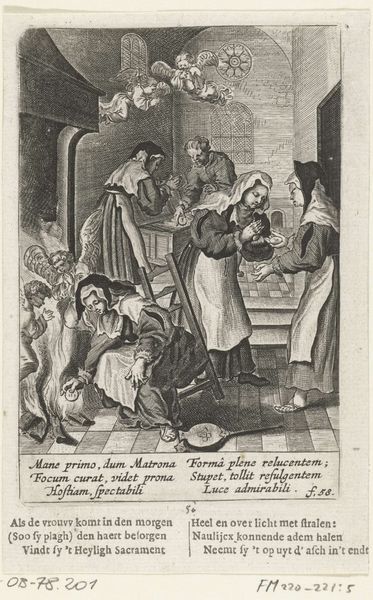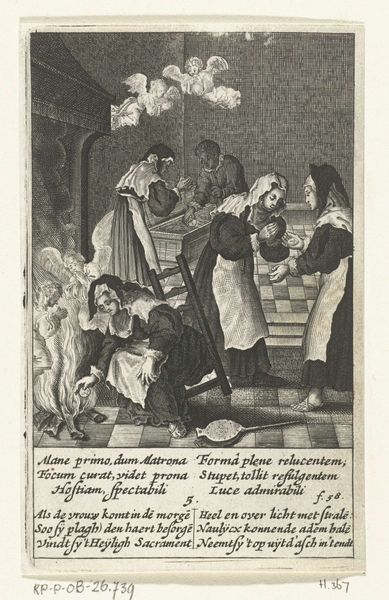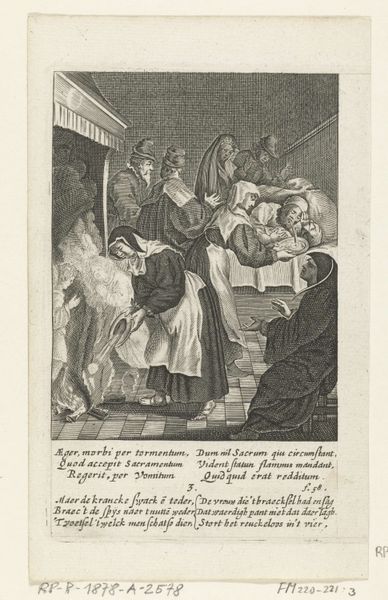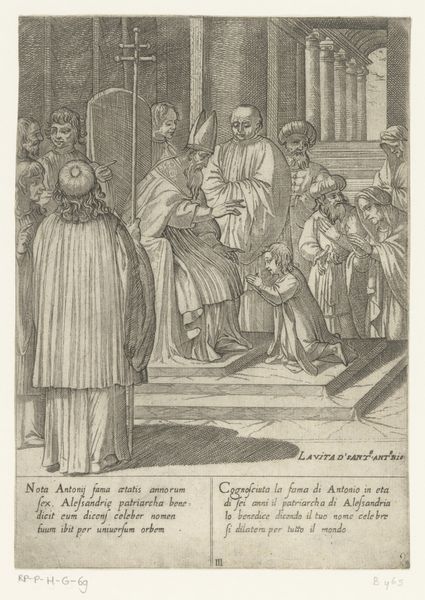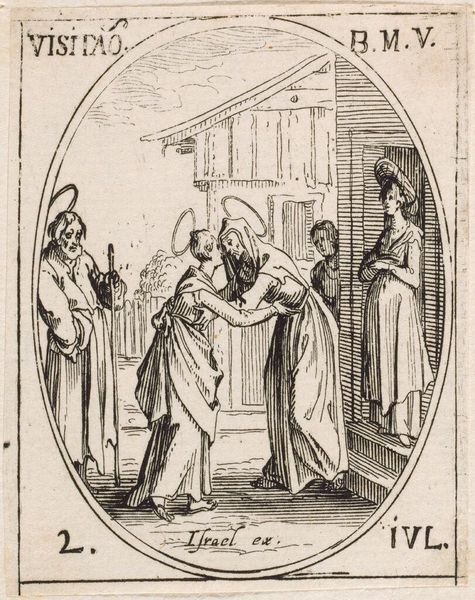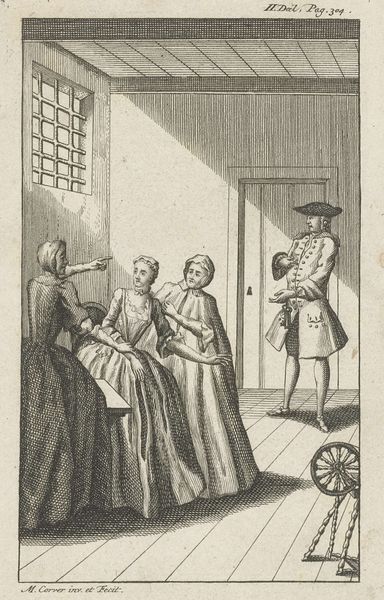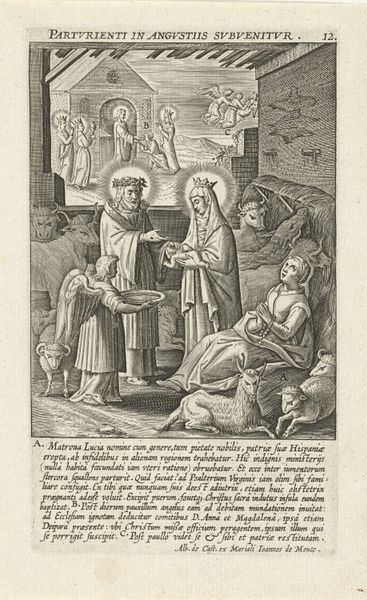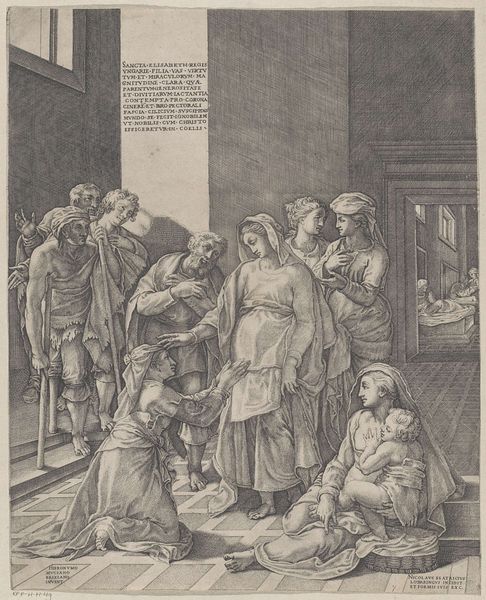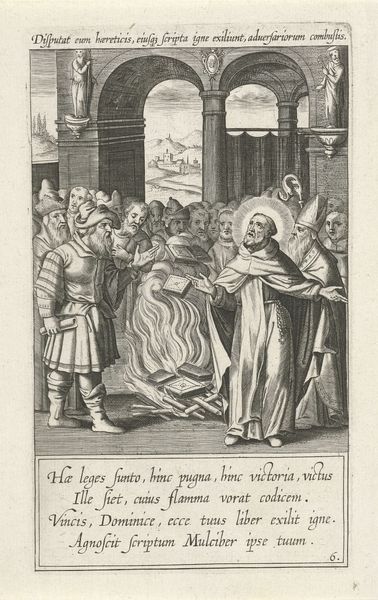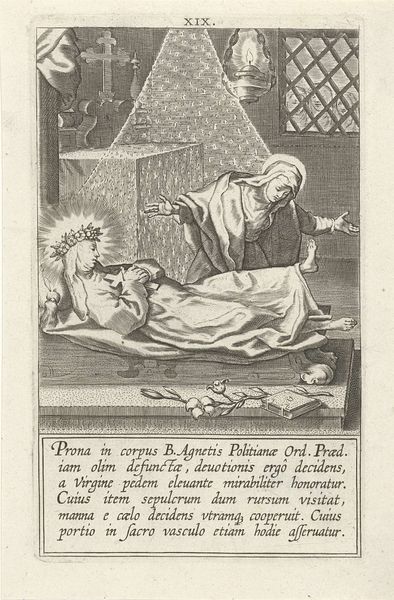
print, engraving
#
narrative-art
#
baroque
# print
#
figuration
#
history-painting
#
engraving
Dimensions: height 150 mm, width 90 mm
Copyright: Rijks Museum: Open Domain
Editor: Here we have Cornelis Galle I's engraving, "Catharina bidt voor de genezing van een ziek jongetje," from 1603, currently held at the Rijksmuseum. The starkness of the lines, the heavy drapery... it feels incredibly staged. What is your read on this image? Curator: I see this print not just as a religious depiction, but as a product of very specific labor and material conditions. The act of engraving itself, the meticulous carving into the copper plate, speaks to a deliberate process. Think about the workshops producing these prints, the skilled artisans replicating images for mass consumption. Editor: Mass consumption? Was it really that widespread back then? Curator: Relatively, yes. Prints like these circulated widely, acting almost as propaganda, reinforcing religious narratives and social hierarchies. Consider the paper, the ink, where they came from, the trade routes that enabled their distribution. It is important to examine these distribution networks and think of who was able to access this image. Editor: So, it's not just about the "miracle" depicted, but also about how that image was produced and spread? Curator: Precisely. The "miracle" is manufactured not only through divine intervention, but also through the printing press, a powerful technology shaping belief and power at the time. What's intriguing here is how this reproductive medium influences the reception and understanding of this event. Does mass production affect our perception of authenticity? Editor: That's a completely different lens than I expected! Thinking about it as a commodity changes the way I understand its impact. Thank you! Curator: Indeed, by examining the means of production, the labor involved, and its dissemination, we uncover the powerful ways images participate in and reflect their social context.
Comments
No comments
Be the first to comment and join the conversation on the ultimate creative platform.
